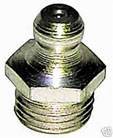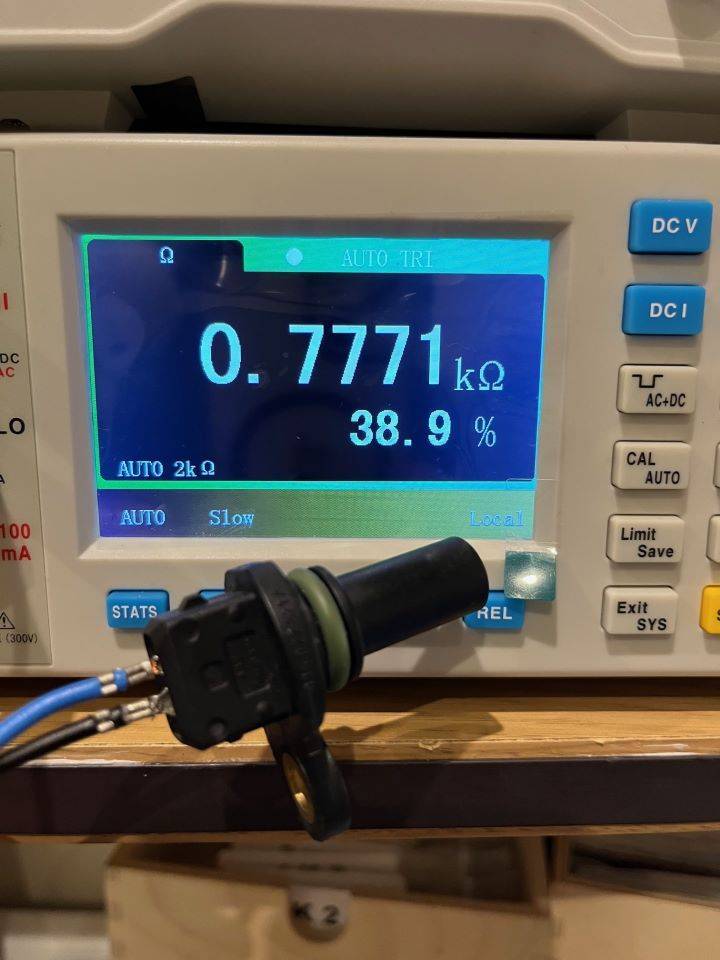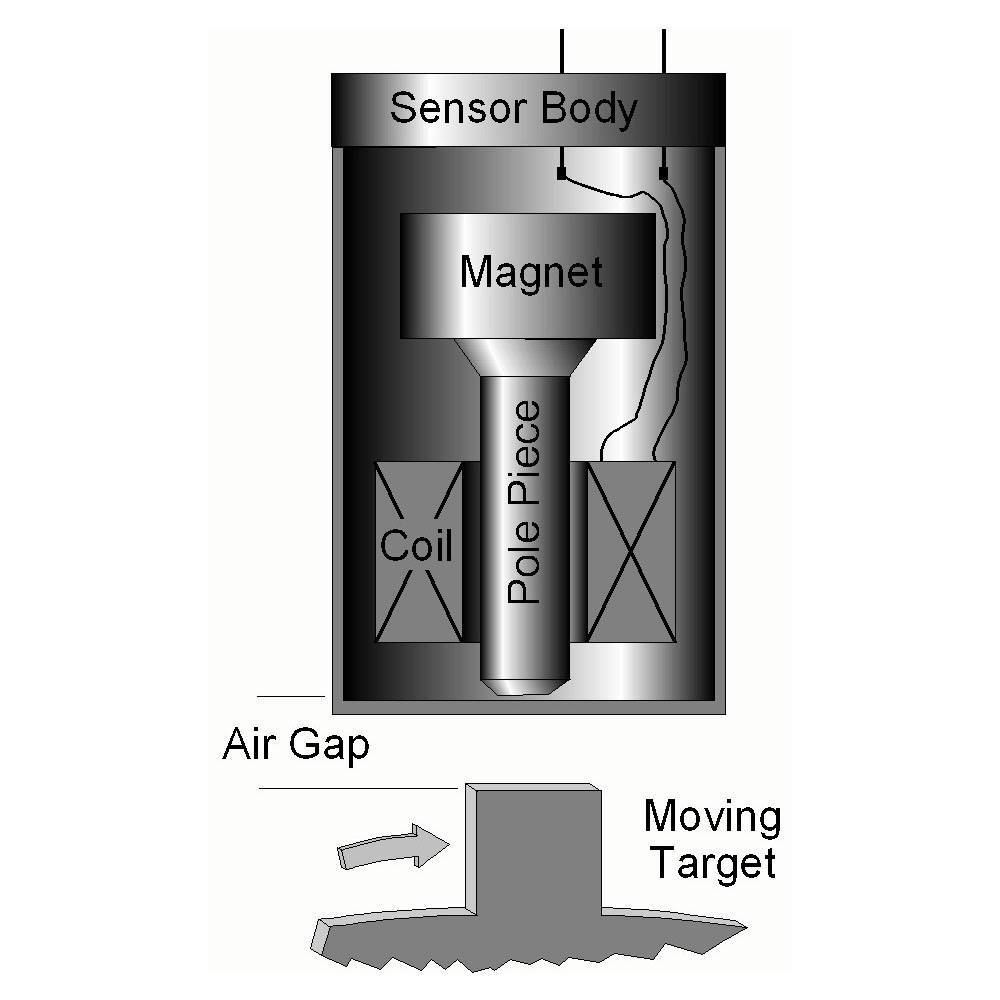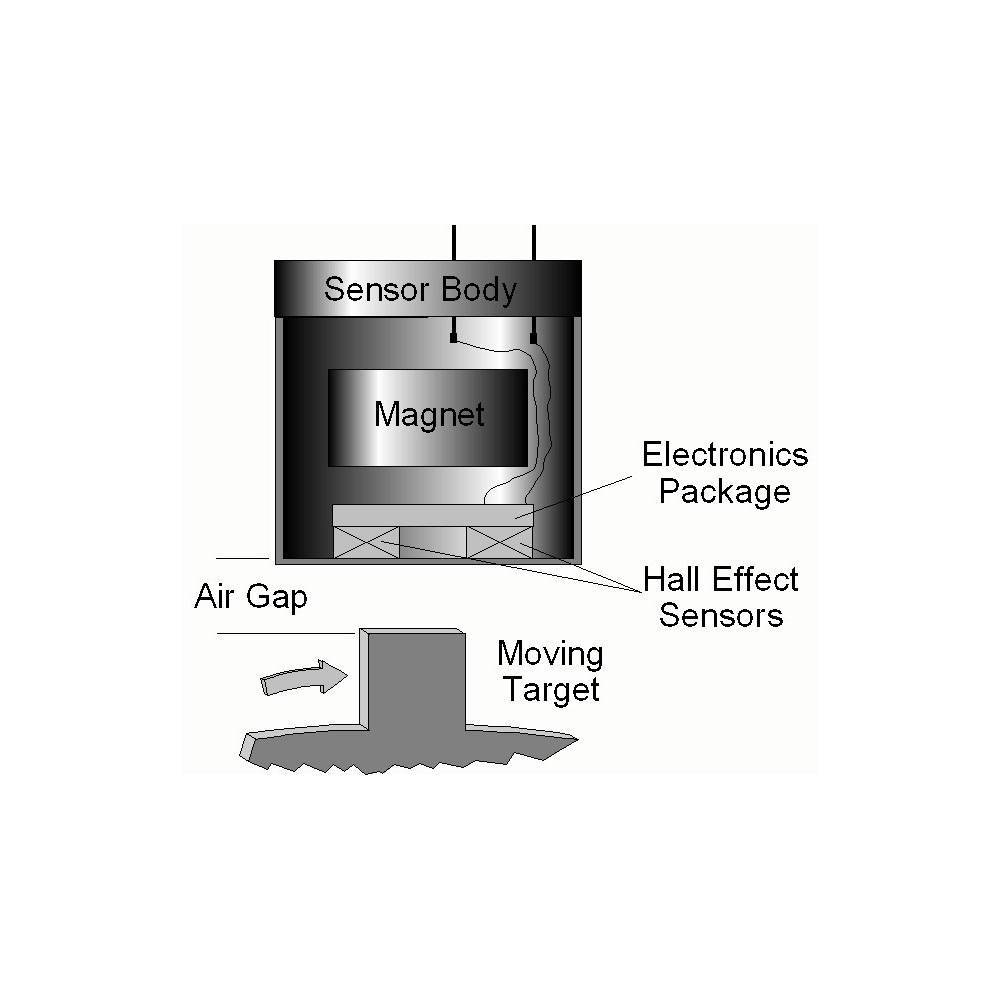

Rincewind
-
Posts
109 -
Joined
-
Last visited
Content Type
Profiles
Forums
Events
Gallery
Blogs
Store
Posts posted by Rincewind
-
-

You could remove the fitting from the prop shaft stuffing box and fit one of these grease nipples, the nipple threads come in different sizes so take the stuffing box fitting with you when you buy one (or carefully measure the outside diameter of the thread), but you would need a suitable grease gun.
I echo what agg221 suggests, its not a big deal if you are not going far.
-
 1
1
-
-
The 'olive' can be fitted either way round, check that there is a 'shoulder' on one end of the nut that the 'olive' cannot pass through.
The plastic / nylon pipe may have distorted or hardened (due to age or overtightening). If there is enough slack in the pipe, try cutting approx. 15mm off the end with a sharp knife and then reassemble. If you cannot push the 'olive' onto the 'new' section of pipe, the olive will be distorted and you will need a new one. It should be a close but sliding fit, ensure the pipe buts up fully inside the brass fitting. Do not overtighten. Just "nip" it enough that you cannot pull the tube out by hand.
If that fails, follow Alans advice and buy a new section of pipe and new olives.
-
Paul beat me to it!

You need a longer rope!
from the boat, up and round a bollard then back down to the steerer taking in the slack as it rises!
-
21 minutes ago, Lady M said:
We did.
 Unbelievable!
Unbelievable!
I posted that tongue in cheek.
Your mooring people don't miss a trick do they?
When the calendar was altered by one of the Roman Emperors the plebs rioted because they thought they were losing part of their life, I think you should do the same!

-
41 minutes ago, Rob-M said:
Feb 29 was in last year's mooring fee.
Did you pay for the extra day in February?

-
Many people use Floor Paint - with or without the sand / granules, and it comes in Red!
-
4 hours ago, mrsmelly said:
Maybe a system called poll tax or similar would be fairer.
3 hours ago, David Mack said:The Poll Tax was based solely on occupancy and didn't vary with property value (or any other measure of income or wealth).
Bring back Window Tax, that's what I say!
And a Porthole Tax,
And a Houdini Tax an all - Posh Buggers!
-
17 minutes ago, David Mack said:
No they don't. Boaters applying for a licence have to declare
Ok, Guilty as charged mi Lud!
But you get the jist....
BTW, I have had a BSC where the examiner has submitted the pass report but it was not updated on CRT's website, I had to update it myself when my auto renew application was subsequently rejected by the system.
The point is, as MtB has confirmed, CRT are capable of checking credentials are in order - if they so wish.
-
6 hours ago, Arthur Marshall said:
Would cost more in bureaucracy than it would bring in, especially as just about all of it would end up being paid by the benefit system one way or another.
It would not cost a penny more.
Boaters that buy a normal license have to prove that they have insurance, a home mooring and a BS certificate otherwise they do not get issued with a license. Its the applicant that has to prove they have the documents in question, CRT do not do the legwork work for you!
The bridge hoppers are just avoiding paying mooring fees and tax dodging, as we are all well aware.
Just a few weeks ago there was a You-tube feature (was it on here?) where one woman was showing off her new build fatty (boat, not body
 ) and explaining (complaining) how she was forced to move every so often to comply with the CC license conditions. - Plenty of money to commission a new build and have it fitted out to her luxury spec but no intent whatsoever to financially support the canal infrastructure by paying for a mooring.
) and explaining (complaining) how she was forced to move every so often to comply with the CC license conditions. - Plenty of money to commission a new build and have it fitted out to her luxury spec but no intent whatsoever to financially support the canal infrastructure by paying for a mooring.
-
 4
4
-
-
11 hours ago, blackrose said:
Everyone is entitled to live their own way of life as long as it doesn't adversely affect others, but we should all expect to pay for that way of life.
Agreed.
If you want to live in a society and benefit from that society then surely it is only right for you to make a financial contribution to the upkeep of that society for the good of everyone including yourself.
Even CC'rs, no matter where in the country they roam, directly benefit from the taxes most of us pay to local councils, Cost of policing, Fire & Rescue, road upkeep, rubbish removal, street lighting etc. etc. the list goes on....
When you apply for a CC license are you not declaring to the world that you no longer wish to pay your fair contribution of taxes?
Perhaps its about time CRT only granted CC licenses when the applicant provides proof (receipt) that a local council tax, or substantial cash contribution, has been paid for that financial year to a Local Authority (of the applicants choice).
There would be plenty of empty visitor moorings available then!

-
16 hours ago, cheesegas said:
Anyone know how to test it and what sort of signal I should be expecting from it? And should whatever it's near be magnetic? I don't think it's a Hall effect sensor as two-wire variants of these are a pretty new thing. Definitely inductance or magnetic based.
Depending on what you are attempting to do here I may have a solution.
Question... are you wishing to repair / restore the revcounter back to its former glory? i.e. as per original spec?
Or... do you simply want a revcounter that works electronically and is constantly accurate, i.e. not connected to the alternator in any shape or form as
Quattrodave has suggested?
If its the former then without physically examining the equipment you have, I may not be of much help, but if its the latter and you want a project to pursue, then I can point you in the right direction as some years ago I made, using a variable reluctance sensor (VRS), my own digital revcounter that is accurate to approx. 1 or 2 RPM at high engine speeds. (This accuracy was sufficient for my purposes, although you could make it even more accurate if you have the will to do so).
As you already know, the variable reluctance sensor that you seem to have will output a sine wave signal (if it is working). Assuming that the signal is to be read by a microprocessor, that will most likely be housed inside the tacho instrument, the sine wave will have to be converted to a square wave prior to being fed into the microprocessor. When counting pulses, microprocessor's do not like sine wave signals and work best with crisp low to high square wave voltage signals. The point to note here is that, from the reluctor sensor to the tacho instrument, the cable you use should be of the shielded type with the braid grounded in order to prevent electromagnetic interference from other electrical equipment, e.g. alternators, corrupting the signal. - This can be important! (Less so important with Hall effect sensors as they are less susceptible to electromagnetic interference ).
Hall effect speed sensors are also fitted with permanent magnets so "testing" the sensor by seeing if it is attracted to ferrous metals is not conclusive evidence of which type of sensor you are dealing with, however the number of electrical connections is a pretty good indicator.
If it helps, I just measured the resistance of a spare reluctance sensor I have at home and it measures 777 ohms but do not read much into this as the resistance can vary widely from manufacturer to manufacturer. Also, be aware that the output voltage of a VRS can vary from as little as 8 volts to over a hundred volts depending on speed / make of sensor. e.g. The reluctor on my engine (over the flywheel teeth) at 642 RPM and producing1038 Hz, gave an output voltage of 152 volts - (both figures recorded on an oscilloscope). And that was at tick-over speed!
Hall effect sensors normally output a voltage close to the supply voltage. i.e. If the input voltage = 5 volts then output voltage = 4.5 volts or thereabouts.
-
I love it!
Its even got Solar Power!
Brilliant,
The owner / builder of that boat and I must share the same sense of fun.
It gives a whole new meaning to the phrase "about to descend the lock"!!!

-
 1
1
-
-
Not a heavy cast iron one but we like it, comes in different sizes and colours. If you are tempted, buy the silicone grips that are made for and fit over the handles so that you don't burn your fingers.
-
From the Apple app store I have Neverspoons - self descriptive
 , and Caskfinder
, and Caskfinder
Unlike Pearley I found it very good, listed all my local watering holes with a full list of beers
-
7 minutes ago, ditchcrawler said:
I posted about the guy on the Ashby using canal water and a battery pressure washer. You could of course connect it to one of the taps in the boat. I have hot and cold bib taps in the engine room.
3 minutes ago, blackrose said:Thanks, I'll try running mine using river water sometime. I can't imagine my little freshwater pump being able to keep up with the demand of a pressure washer but I guess it just supplies what it can and the pressure delivery of the washer reduces accordingly?
Mine does, keeps the washer supplied without reduction in output pressure but empties the tank faster than normal!

-
On 08/03/2024 at 23:58, Doodlebug said:
Does anyone know why the need for an alternator to slip? A timing belt would allow for a much tighter and smaller pulley in the alternator and thus could solve my problem. But why do you never see timing belts used in this way?
I too looked at this scenario many years ago and questioned why Vee / wedge belts are used in this application. Having worked for a living on many diesel generation plants of different configurations, I could not arrive at a sensible conclusion other than it was nothing more than a historic and cheap solution to drive the alternator on an ICE. I.e., wedge belt arrangements can tolerate a little misalignment in several planes without being unduly compromised. (Automotive industry driven I suspect, with one eye on production costs and the other on third party repairs / replacements beyond their control).
22 minutes ago, BWM said:I've often wondered if an alternator designed for a lorry may be a better option as most are low revving (limited to 3,000 rpm)?
Beat me to it! the link below may prove informative. It seems to allude to that application.
As regards your particular engine / alternator setup / problem, you may find this link interesting for Prestolite / Leece-Neville alternators:-
https://www.idleproextreme.com/wp-content/uploads/2019/03/IdlePro-2pg-Flyer-031819.pdf
I also have some technical information that I downloaded from Leece-Neville many years ago in PDF format that I could forward to you if you wish, via email. It contains info on pulley selection guides, output curves and recommended drive to alternator ratios etc.
Sadly I can no longer find the link on-line but the PDF Data is still valid.
If its of interest to anyone else...........
Disillusioned with the traditional set up of the Vee belt alternator drive, with its many problems, twenty years ago I changed my Vee belt drive to a toothed belt drive system (water pump included).
I used HTD pulleys and belts (20mm wide x 8mm pitch) using taperlock fittings on the crankshaft and water pump, matching the sizes of pulley diam. as close as possible whilst maintaining the crankshaft to alternator drive ratio. Due to its small diameter the alternator pulley was bored out to the size of the shaft and counter bored to accommodate the retaining nut. I retained the tensioning arrangement as that part of the setup is simple yet effective but it did require appropriate spacers in order to establish alignment of the pulleys.
As far as reliability is concerned I can testify that after twenty years’ service, I have had no problems with the drive train whatsoever.
As a matter of fact I bought two "spare" HTD belts at the same time all those years ago, - "just in case" - and they are still in the same protective plastic bag in the engine room, untouched and unused to this day.
I checked the belt a few weeks ago, and it shows no visible cracks or deterioration! (But having said that, Sods law dictates that it will 'give up the ghost' and snap next time I am out cruising!)

Benefits include:-
- No belt slip - hence better generation of power - and positive / reliable water circulation!
- Reduced belt tension - resulting in less stretching / wear of belt. (some tension is required to eliminate "belt slap")
- Less wear on alternator, water pump and crankshaft bearings. (No excessive side loading)
- Positive knowledge of drive condition if electrical generation problems should occur.
-
 1
1
-
On 08/03/2024 at 19:48, Peugeot 106 said:
I’m planning to get a cheap pressure washer to get the greenery off my boat after winter. Non slip gunwales, window surrounds, tonneau cover etc. I’ve been looking at a Karcher K2 Basic £69 B&Q.
I have used a Karcher with the Patio cleaning attachment on the roof of my boat with great results, cleans all the green muck out of the non slip sand surface with no elbow grease required.
-
 1
1
-
-
Have you considered that maybe the carbon brushes and/or the slips ring are worn, (or both!) causing intermittent excitement (or non excitement) of the rotor coils?
-
These could be Fresh Water Shrimps (cant remember the technical name) but you would have to identify them to be certain. They used to be quite common in the water supply pipes if the disinfection regime was ineffective - or at least the larvae of the shrimp used to be commonly found.
When water flows from the service reservoir into the service pipes it is injected with chlorine to kill any bugs on its journey to your taps. When chlorine mixes with water it turns into an acidic mixture that dissolves the bugs. (which is why Mustard gas containing a high proportion of chlorine, when mixed with body moisture, blinded and destroyed the lungs of soldiers in the first world war) -
Water companies are increasingly moving away from injecting chlorine gas and injecting Sodium Hypochlorite instead which has the same effect but is less of a hazardous substance to handle and store.
The further the distance is from the injection point, the less effective it becomes and often - but not always - booster stations are provided to inject more gas / hypo if sampling indicates it is necessary.
If the tap you are using is at the end of the pipeline the solution may be depleted and the bugs will flourish
Fresh water shrimps are not considered harmful and swallowing them or their larvae should not do you any harm but should not be in the water supply as this indicates that other more harmful bacteria could flourish.
I suggest you get the water from the tap tested by the relevant water company.
-
 4
4
-
-
Nice teardown, thanks for that. Proof of the pudding though is in the eating! Hope you can update us

-
Please tell us.........we would love to know,
Just how many of you are related to Heath Robinson?




-
 1
1
-
 1
1
-
-
Sods law strikes again......You always meet someone coming tother way in a Bridge ole!
-
5 hours ago, Mark R said:
Does anyone know what the material of a typical panel is made of?
I have used this material in the past. Not cheap, but rigid and looks smart.
Nor am I advocating this supplier, just indicating what is available out there..... You should be able to get smaller sizes / amounts if you shop around.
https://plasticsheetsshop.co.uk/aluminium-composite-panels/3mm/
-
 1
1
-
-
Or look at it another way, .......
With an aging population and less children to replace them, ------- Housing problem solved!






Water pressure conundrum
in Boat Equipment
Posted
Does anyone really know what you are drinking?
You may be interested to know that on the outskirts of Warrington there are several boreholes that are used to extract drinking water from aquifer's. At one of these boreholes arsenic leaches into the water through the bedrock. United Utilities were required to build an Adsorption plant to remove some of the arsenic before the water was fed into the mains. (Adsorption, simply put, = Very large filter!)
Take note that I said some of the arsenic!
At this particular site around 80% of the water was treated while the other 20% bypassed the adsorption process and was remixed before being fed into the mains! UU was not allowed to remove all of the contaminant - by law! (even though it was possible to do so). The percentage of removal / treatment depended of course on whatever the concentration of contaminant was in the water being pumped up and this was closely and continuously monitored.
i.e., Adsorption percentage being treated was 'site specific'.
This is not 'hearsay' by the way - I was tasked with writing the Company Standard / maintenance manual for this (and similar) Adsorption processes on behalf of UU.
Apparently, a little bit of arsenic does you good! Personally, I prefer a large glass of malt whiskey!
Personally, I prefer a large glass of malt whiskey!